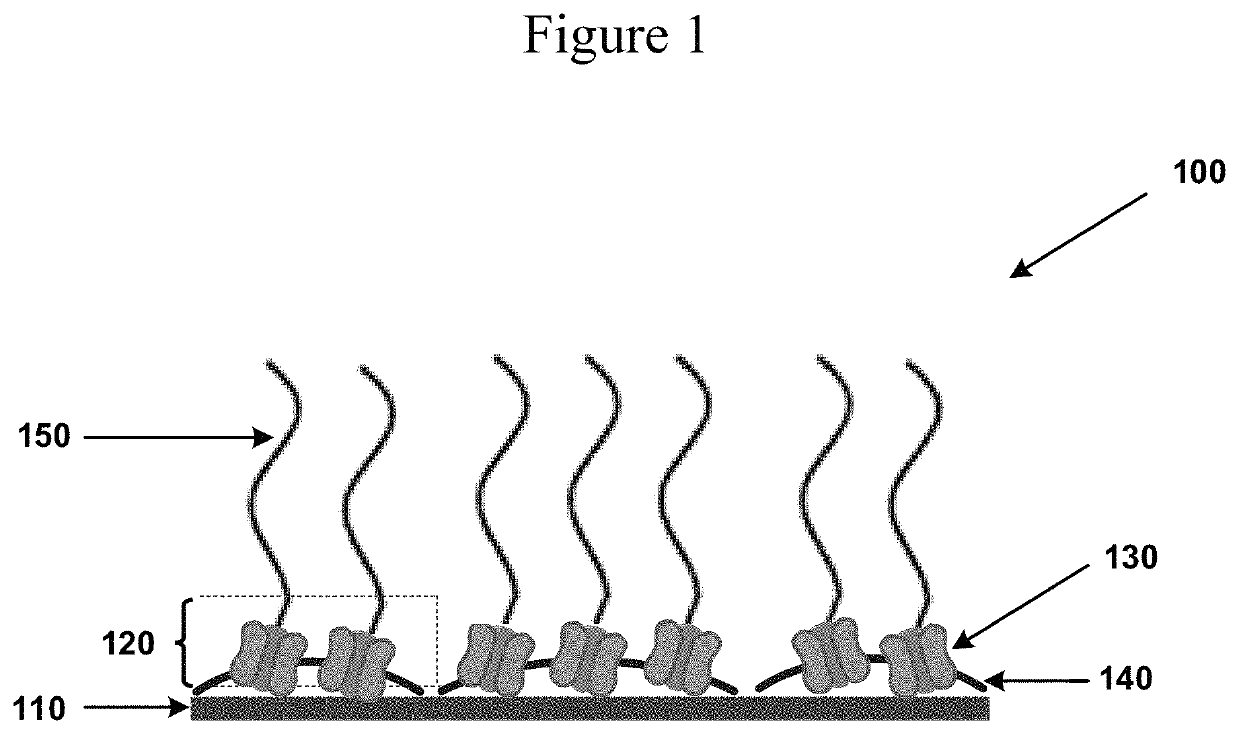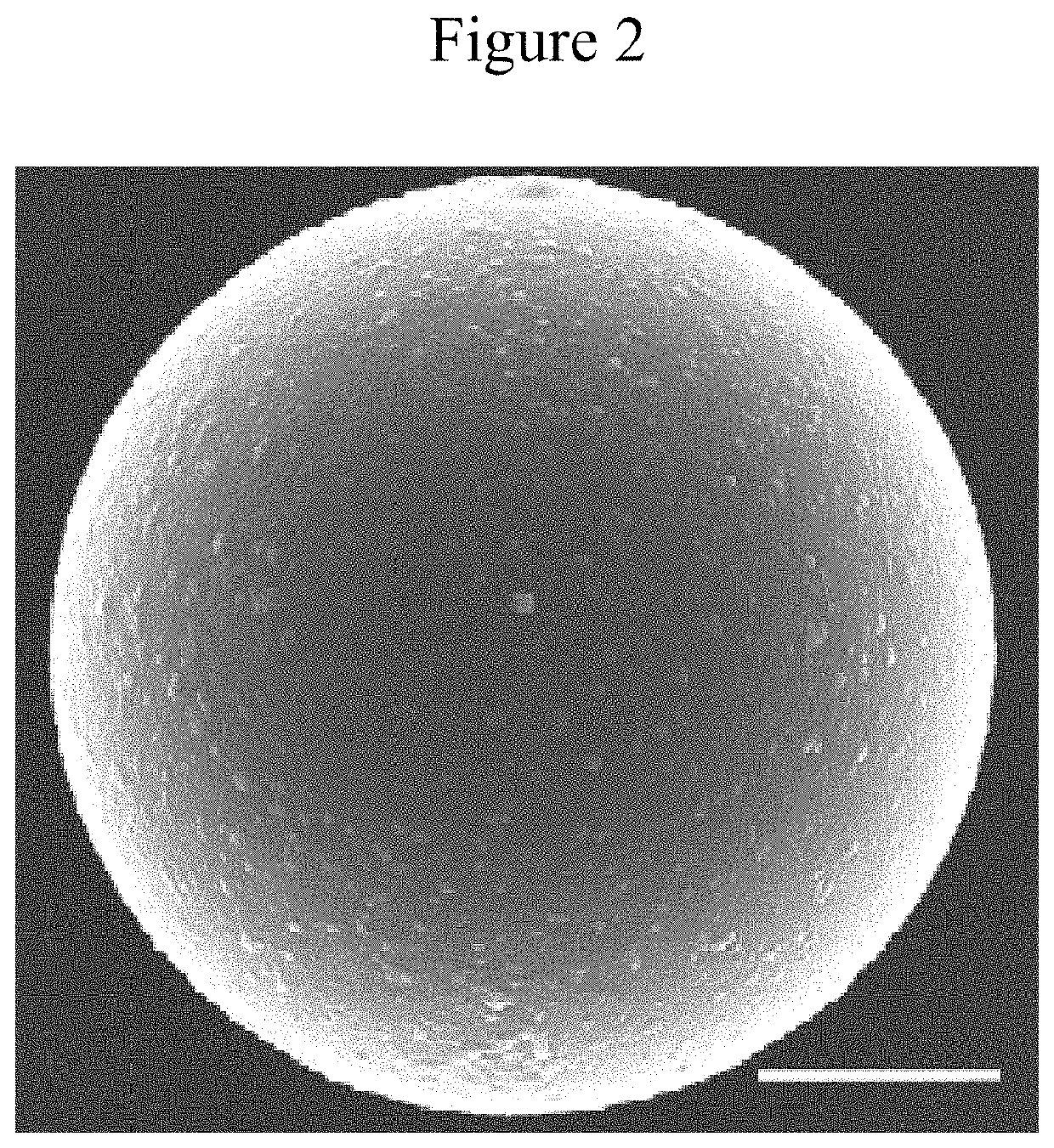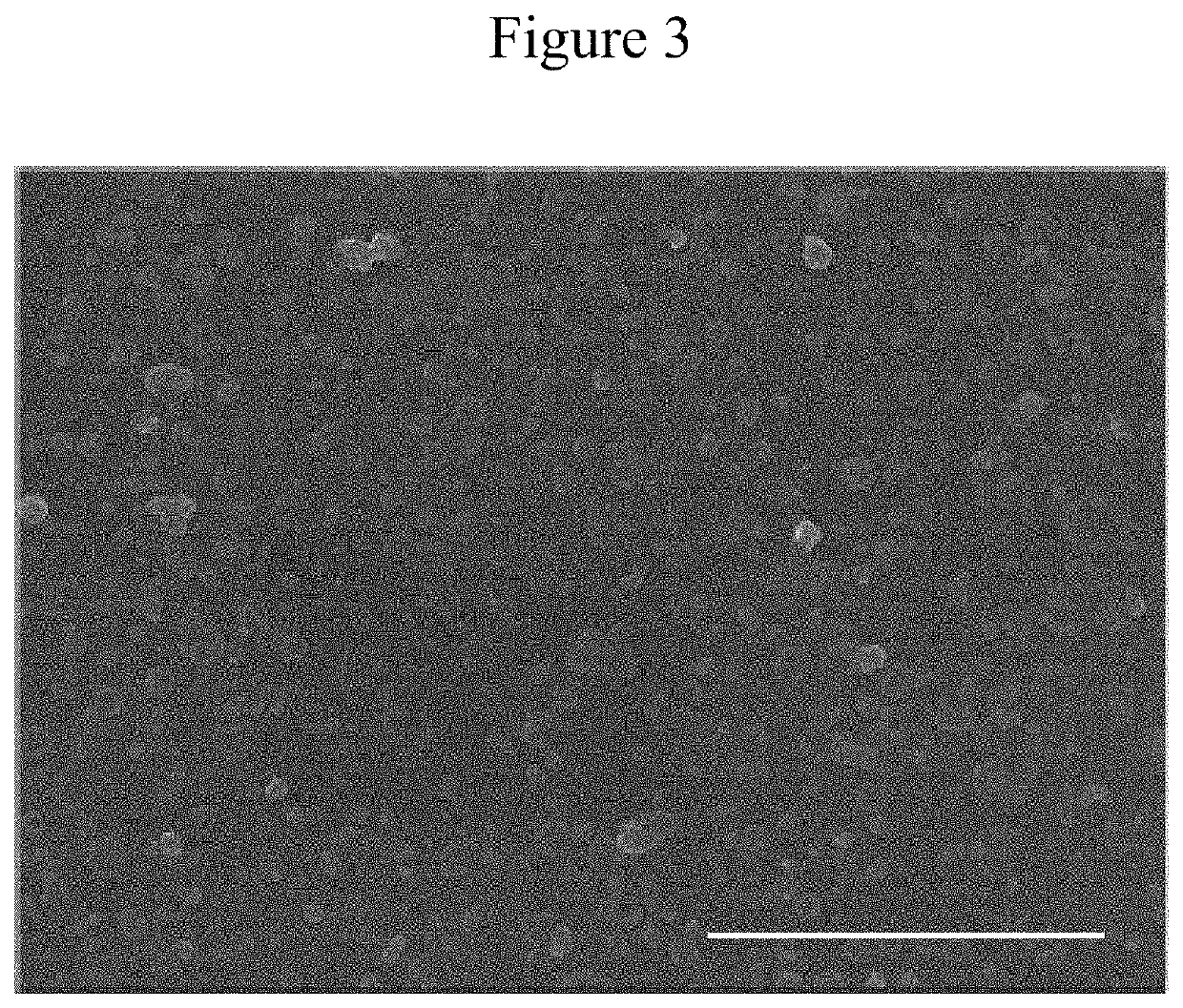Self-regenerating hyaluronan polymer brushes
a hyaluronan polymer and self-regeneration technology, applied in the field of polymer brush constructs, can solve the problems of limited man-made hyaluronan polymer brushes, rare and limited methodologies for synthetic catalysis of biopolymers from surfaces, and achieve the effect of high densities of hyaluronan synthas
- Summary
- Abstract
- Description
- Claims
- Application Information
AI Technical Summary
Problems solved by technology
Method used
Image
Examples
example 1
HA Synthase Enriched Bacterial Membrane Fragments
[0095]This example describes the preparation of HA synthase enriched bacterial membrane fragments. HA synthase open reading frames from Streptococcus equisimilus were inserted into the pKK223-3 vector of E. coli SURE™ cells as described previously (Tlapak-Simmons V L, et al., 1999, Purification and lipid dependence of the recombinant hyaluronan synthases from Streptococcus pyogenes and Streptococcus equisimilis, Journal of Biological Chemistry 274(7), 4239-4245). The bacteria were grown to OD600 1.6 at which point HA synthase production was induced for three hours. The bacteria were then centrifuged at 4° C. for 5 min at 5000 rcf. The bacteria pellet was resuspended in the lysis buffer, comprised of 50 mM HEPES (Research Products International Corp H75030), 500 mM NaCl (OmniPure 7710), 10% glycerol (Invitrogen 15514-011), 1 mM phenylmethane sulfonyl fluoride (PMSF) (Sigma-Aldrich P7626, diluted with anhydrous isopropyl alcohol), DNAas...
example 2
Procedure for Binding HAS Fragments to Glass
[0100]This example describes the binding of the HAS-active membrane fragments to a glass interface. In general, the glass surface was coated with polyethyleneimine (PEI) and then activated with glutaraldehyde which formed a covalent crosslinking with amine functional groups of the membrane fragments (FIG. 5).
A. Immobilization on Glass Slides:
[0101]Coverslips (VWR 48366 246 or VWR 48366 067) were sonicated in ultrapure water for 15 min and cleaned in reagent grade acetone in a sonicating water bath for 15 minutes. The coverslips were then rinsed with ultrapure water and dried with nitrogen and treated in a plasma cleaner (Harrick Plasma, PDC-32G, High RF power, air, 1 min). Poly(ethyleneimine) (PEI) (Sigma 482595, average Mw 1.3 kDa, 50% w / v in water) was diluted with ultrapure water to 2.5% and the pH was adjusted to 7.0 using HCl. 200 μL PEI was used to cover each coverslip (facing up) after plasma cleaning. The coverslips were incubated ...
example 3
Activating HA Synthesis in Membrane Fragments
[0104]Activation of HA synthase in membrane fragments was achieved by exchanging the storage buffer of the membrane fragment suspension prepared in Example 1 with activation buffer (pH 7.3, 75 mM NaKPO4, 50 mM NaCl, 20 mM MgCl2, 0.1 mM EDTA). After warming the sample for 45 min in a 30° C. incubator, uridine 5-diphosphoglucuronic acid trisodium salt (UDP-GlcUA, Sigma-Aldrich U6751) and uridine 5-diphospho-N-acetylglucosamine sodium salt (UDP-GlcNAc, Sigma-Aldrich U4375) were added at 0.5 mM to 1.5 mM each. HA synthesis was quenched by exchanging the activation buffer with quenching buffer (pH 7.3, 75 mM NaKPO4, 50 mM NaCl, 20 mM EDTA) via mixing by gently pipetting the liquid up and down. The buffer exchange was repeated seven times.
PUM
| Property | Measurement | Unit |
|---|---|---|
| distance | aaaaa | aaaaa |
| height | aaaaa | aaaaa |
| size | aaaaa | aaaaa |
Abstract
Description
Claims
Application Information
 Login to View More
Login to View More - R&D
- Intellectual Property
- Life Sciences
- Materials
- Tech Scout
- Unparalleled Data Quality
- Higher Quality Content
- 60% Fewer Hallucinations
Browse by: Latest US Patents, China's latest patents, Technical Efficacy Thesaurus, Application Domain, Technology Topic, Popular Technical Reports.
© 2025 PatSnap. All rights reserved.Legal|Privacy policy|Modern Slavery Act Transparency Statement|Sitemap|About US| Contact US: help@patsnap.com



